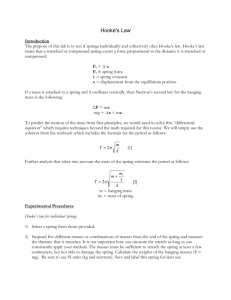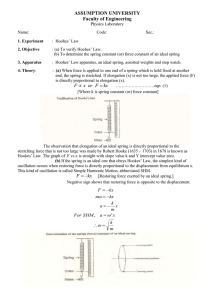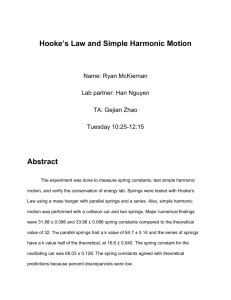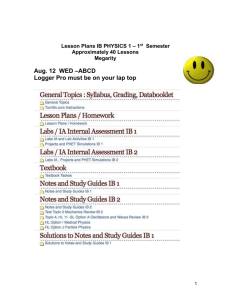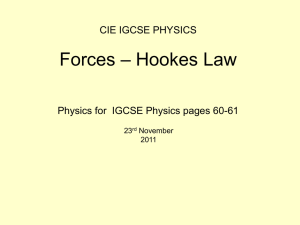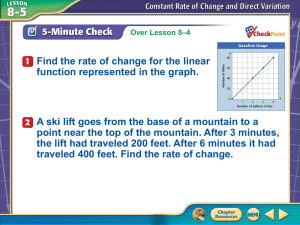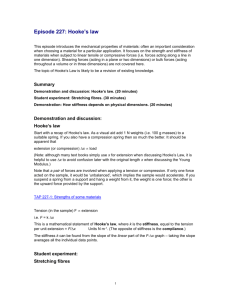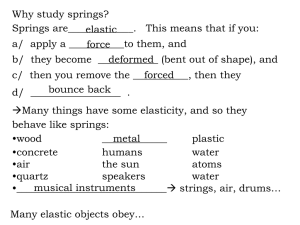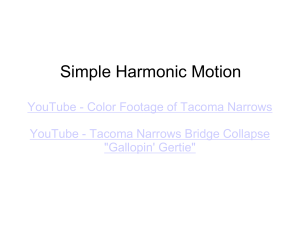Hookes Law
advertisement
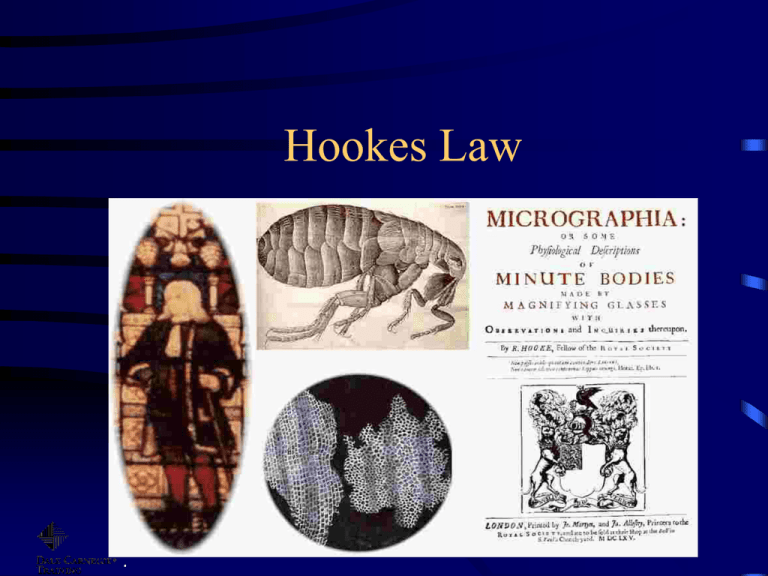
Hookes Law . Robert Hooke 1635-1703 • Researched and wrote papers on Geometry, Snowflakes, Heat, Astronomy, Fossils, Air Pumps, Light, Watches, Telescopes and Silkworms…..among other things • Continually squabbled with Newton with whom he was miffed because Newton seemed to get all the attention and credit..Hookes Law was one of the few things he was popularly credited with • A rather crabby individual but credited with the invention of universal joints, the balance wheel and the iris diaphragm What did Hooke discover ? • the more force that was put on materials the more they extended • With some materials they also extended in a regular way eg if the force was doubled so did the extension • this was true as long as their elastic limit was not exceeded What does this mean? What the graph shows E xtension (m ) E xtension proportional to Force. Straight line graph. O bject w ill return to original shape. (E lastic) B reakage E lastic Lim it E xt’ not proportional to Force. O bject w ill not return to original shape. (N ot E lastic). Force (N ew tons) What is the elastic limit? • The material no longer shows elastic behaviour (ie does not return to original size when stretching force is removed) • The material is permanently deformed ie is larger or longer than originally • The material is weaker as the above effects are caused by fracture of some atomic bonds Since Force is proportional to extension Hookes Law could be put as Fx Where F is the applied force in Newtons x is the extension in metres Or if k is the proportionality constant F=kx What does k mean in F=kx? • k is called the spring constant and is a measure of the stiffness of the spring or material • It has units of Nm-1 (newtons per metre) • The higher the k the stiffer the spring • Materials with a high k need a large force to for a given extension • adding springs in series or parallel changes k Series and parallel springs Series k decreases by 2 Combined springs slacken compared with single spring extension doubles Parallel k increases by 2 Combined springs stiffen compared with single spring extension halves So what? • Understanding Hookes law is critical to the construction of any structure eg bridges buildings • Deformation of materials is also critical in vehicle design though in practice the terms stress ( the force per square metre) and strain (the extension per unit length) are more commonly used instead of simply force and extension Summary: A material is said to obey Hookes Law if its extension is directly proportional to the applied force More info on Hooke at http://www.roberthooke.org.uk/

